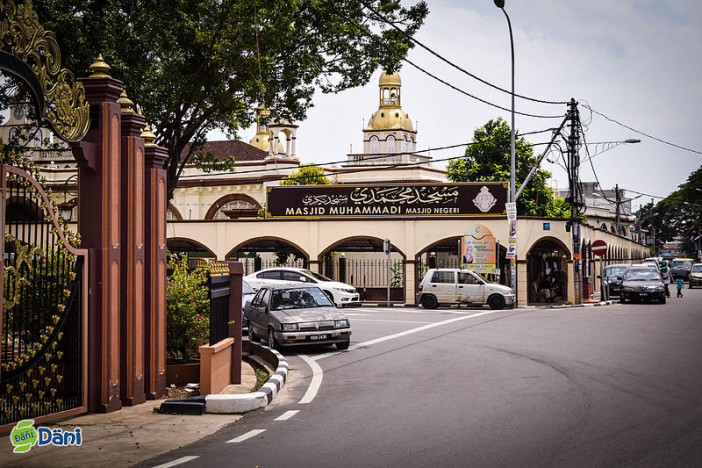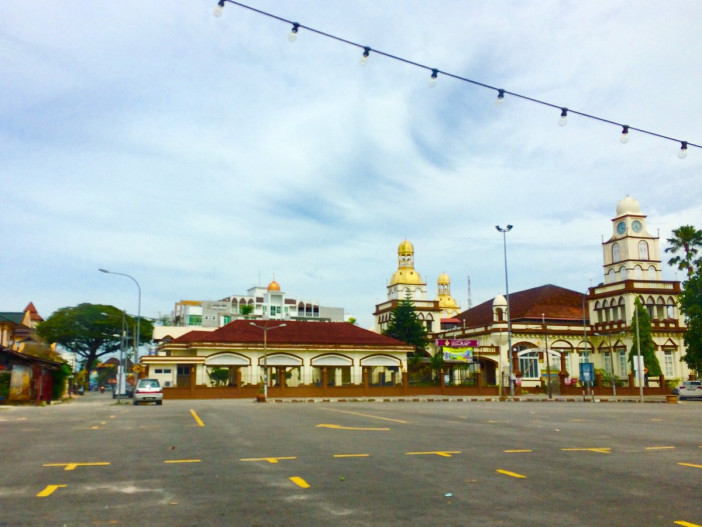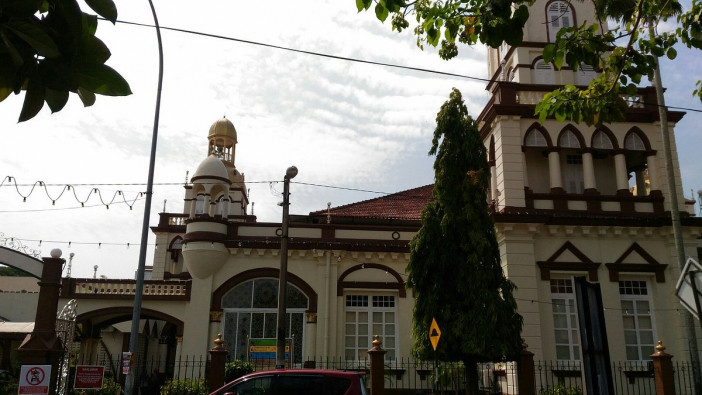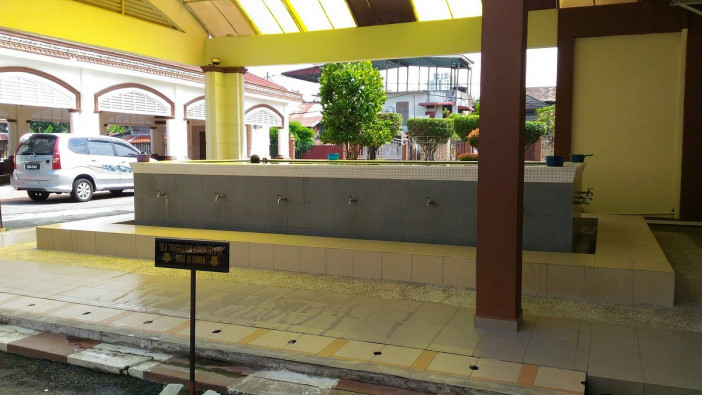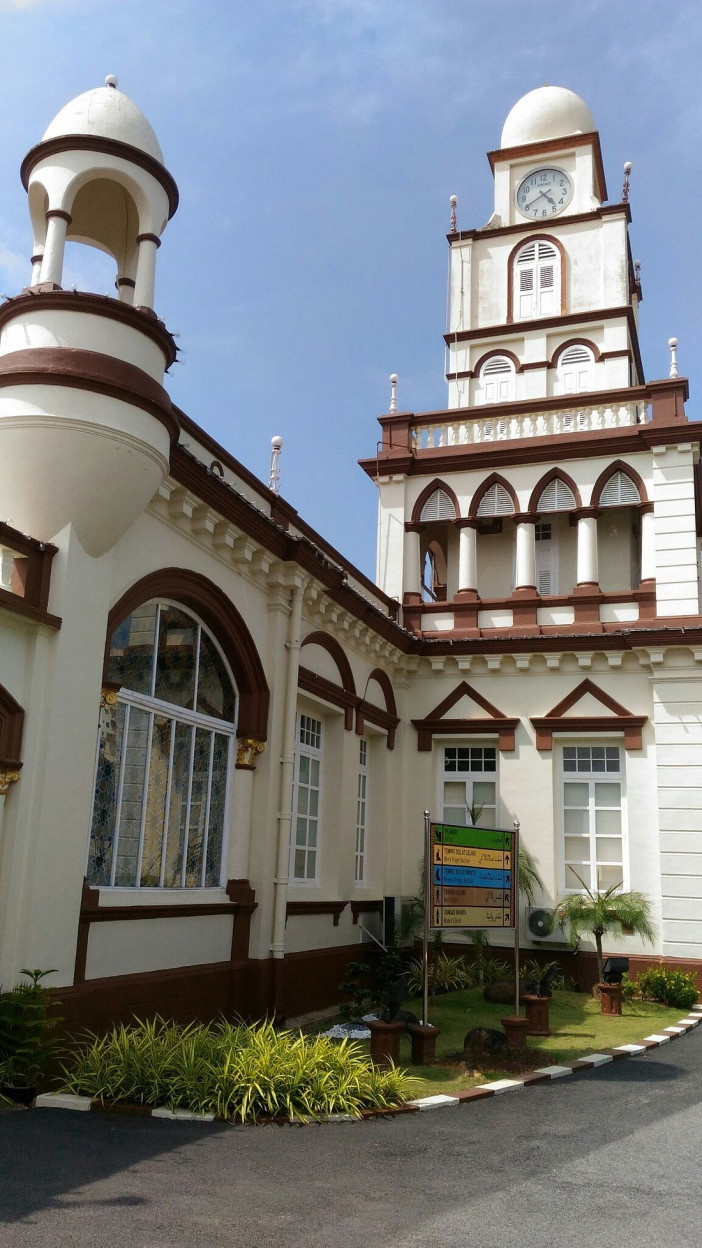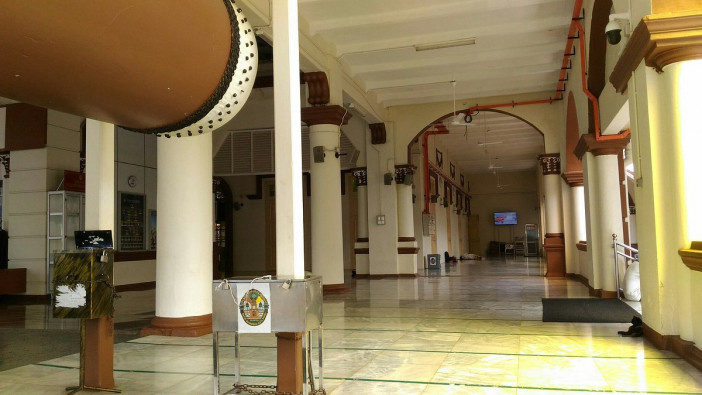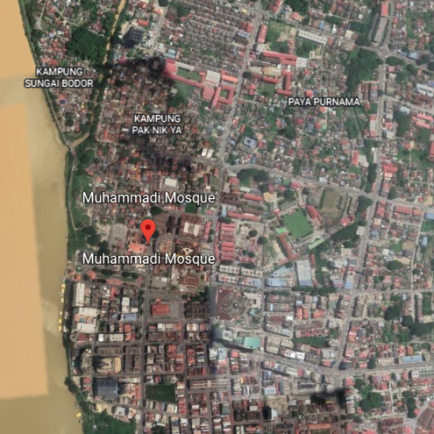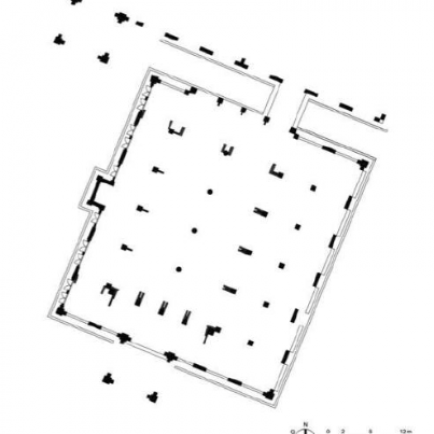Muhammadi Mosque
History
Muhammadimosque was built in 1867 from selected timbers during the reign of Sultan Muhammad II (1830-1886). The renovation of this mosque from a wooden building to a new Western-style (British) stone building was made in 1922 and was inaugurated by KDYMM Sultan Ismail on Friday 31st July 1931 and named the Masjid Muhammadi.
The renovations and additions to the Mosque building have been carried out several times for example in 1959, 1968, 1976 and 1987.
Urban and Architectural
As It was built during the British Colonial era, Its architecture is very much influenced by that era's architecture, and similar to many mosques built in the early 20th century, This is evident in the building of its minarets, with is three-tiered towers which are placed on the four sides of the rectangular mosque building, with a clock tower that demarcates the gibla wall. Its architecture is uncommon in other parts of the region or the world, it was probably built to infuse the architecture of two cultures, that is the western and the local architecture, presented to impress the people and to stand out from its surroundings,
The minarets embellishments made of neoclassical elements
can be seen at its base, of which the Corinthian-styled columns were chosen to
support its rounded arches. It is then finished with dentil inserted below the
multiline cornices before it is repeated by the use of pointed arches and Doric
order columns. The upper tiers are capped with concrete cloister vault domes
with rounded clerestory windows before it is surmounted with an octagon balcony
with a smaller dome. Finials are placed on each corner of the dome and fully
sheathed in a gold finish.
A similar style has been applied across the mosque façade,
with an added turret with a covered balcony using a pointed roof farm placed at
the corners of the mosque building. To adhere and counter the local hot and
humid climatic conditions, an elongated double pitched roof covers most of the
prayer hall area and the remaining flat roof near the parapet walls are used as
gutters to channel rain water away to the nearby drains.
Description
The Al-Muhammadi Mosque in Kelantan was built in 1867 and is part of the state’s religious heritage, having seen many of Kelantan’s religious teachers, or ulama, teaching here.
The initial structure was built using wood before being enhanced with concrete modifications in 1922. The tower and dome structure as well as the design of the mosque makes it a picture perfect landscape background. Visitors will be able to experience for themselves the look and feel of Islamic design and architecture, as well as with a pinch of history due to the age of the mosque. The vastness of the mosque, at 10,600 square feet, makes it spacious enough for visitors to wander through the mosque to view the designs and patterns on walls and arches.
References
https://itc.gov.my/listings/masjid-muhammadi/
https://itc.gov.my/listings/masjid-muhammadi/
https://www.holidaygogogo.com/al-muhammadi-mosque-kelantan/
Details
الموقع
D1, Bandar Kota Bharu, 15000 Kota Bharu, Kelantan,Malaysia
عدد المصليين
1,000
المالك / المتبرع
Malaysian Public Works Department
المعماري
تاريخ البناء
1916
Area
984 sq.m
الرسومات المعمارية
الخريطة
History
Muhammadimosque was built in 1867 from selected timbers during the reign of Sultan Muhammad II (1830-1886). The renovation of this mosque from a wooden building to a new Western-style (British) stone building was made in 1922 and was inaugurated by KDYMM Sultan Ismail on Friday 31st July 1931 and named the Masjid Muhammadi.
The renovations and additions to the Mosque building have been carried out several times for example in 1959, 1968, 1976 and 1987.
Urban and Architectural
As It was built during the British Colonial era, Its architecture is very much influenced by that era's architecture, and similar to many mosques built in the early 20th century, This is evident in the building of its minarets, with is three-tiered towers which are placed on the four sides of the rectangular mosque building, with a clock tower that demarcates the gibla wall. Its architecture is uncommon in other parts of the region or the world, it was probably built to infuse the architecture of two cultures, that is the western and the local architecture, presented to impress the people and to stand out from its surroundings,
The minarets embellishments made of neoclassical elements
can be seen at its base, of which the Corinthian-styled columns were chosen to
support its rounded arches. It is then finished with dentil inserted below the
multiline cornices before it is repeated by the use of pointed arches and Doric
order columns. The upper tiers are capped with concrete cloister vault domes
with rounded clerestory windows before it is surmounted with an octagon balcony
with a smaller dome. Finials are placed on each corner of the dome and fully
sheathed in a gold finish.
A similar style has been applied across the mosque façade,
with an added turret with a covered balcony using a pointed roof farm placed at
the corners of the mosque building. To adhere and counter the local hot and
humid climatic conditions, an elongated double pitched roof covers most of the
prayer hall area and the remaining flat roof near the parapet walls are used as
gutters to channel rain water away to the nearby drains.
Description
The Al-Muhammadi Mosque in Kelantan was built in 1867 and is part of the state’s religious heritage, having seen many of Kelantan’s religious teachers, or ulama, teaching here.
The initial structure was built using wood before being enhanced with concrete modifications in 1922. The tower and dome structure as well as the design of the mosque makes it a picture perfect landscape background. Visitors will be able to experience for themselves the look and feel of Islamic design and architecture, as well as with a pinch of history due to the age of the mosque. The vastness of the mosque, at 10,600 square feet, makes it spacious enough for visitors to wander through the mosque to view the designs and patterns on walls and arches.


